
Royal Botanic Gardens, Kew is a non-departmental public body in the United Kingdom sponsored by the Department for Environment, Food and Rural Affairs. An internationally important botanical research and education institution, it employs 1,100 staff. Its board of trustees is chaired by Dame Amelia Fawcett.

The Restionaceae, also called restiads and restios, are a family of flowering plants native to the Southern Hemisphere; they vary from a few centimeters to 3 meters in height. Following the APG IV (2016): the family now includes the former families Anarthriaceae, Centrolepidaceae and Lyginiaceae, and as such includes 51 genera with 572 known species. Based on evidence from fossil pollen, the Restionaceae likely originated more than 65 million years ago during the Late Cretaceous period, when the southern continents were still part of Gondwana.

Joseph Marie Henry Alfred Perrier de la Bâthie was a French botanist who specialized in the plants of Madagascar.

The Polemoniaceae are a family of flowering plants consisting of about 27 genera with 270–400 species of annuals and perennials native to the Northern Hemisphere and South America, with the center of diversity in western North America.
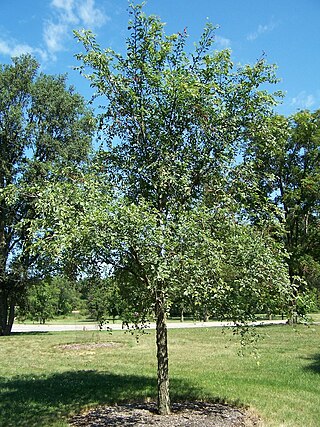
Ulmus chenmouiW. C. Cheng, commonly known as the Chenmou, or Langya Mountain elm, is a small deciduous tree from the more temperate provinces of Anhui and Jiangsu in eastern China, where it is found at elevations below 200 m on the Langya Shan and Baohua Shan mountains. The tree was unknown in the West until 1979, when seeds were sent from Beijing to the De Dorschkamp research institute at Wageningen in the Netherlands.
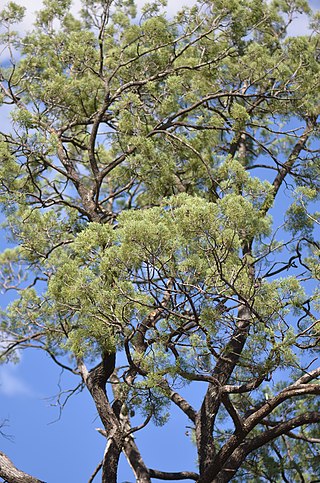
Callitris columellaris is a species of coniferous tree in the family Cupressaceae, native to most of Australia. Common names include white cypress, white cypress-pine, Murray River cypress-pine, and northern cypress-pine. Callitris columellaris has become naturalised in Hawaii and in southern Florida.

Clinostigma is a genus of flowering plants in the Arecaceae (palm) family. It is native to various islands in the western Pacific.

I. M. Johnston, was a United States botanist. He studied at Pomona College in Claremont, California and at Harvard University. His plant collections are housed in the Rancho Santa Ana Botanic Garden, in Claremont, and also in the Gray Herbarium of Harvard University.

Heuchera rubescens, with the common name pink alumroot, is a species of Heuchera.

Ludwig Adolph Timotheus Radlkofer, was a Bavarian taxonomist and botanist.

Jean Baptiste Louis Pierre, also known as J. B. Louis Pierre, was a French botanist known for his Asian studies.

Jaques Étienne Gay was a Swiss-French botanist, civil servant, collector and taxonomist. His name is associated with plants in standardised botanical nomenclature, e.g. Crocus sieberi J.Gay. He was the most famous of the students of botanist Jean François Aimée Gaudin with whom he began collecting plants at the age of 14. He was married to Rosalie Nillion.

The family Apodanthaceae comprises about 10 species of endoparasitic herbs. They live in the branches or stems of their hosts, emerging only to flower and fruit. The plants produce no green parts and do not carry out any photosynthesis. There are two genera: Pilostyles and Apodanthes. A third genus, Berlinianche, was never validly published. Mitochondrial and nuclear DNA sequences confidently place the Apodanthaceae in the Cucurbitales, where they also fit well in terms of their flower morphology. The native range of Apodanthes is restricted to Central and tropical South America, while Pilostyles has a much wider though disjointed native range, encompassing many countries in tropical and subtropical America, a section of Africa from Gabon to Tanzania and down to Zimbabwe, as well as Turkey, Iran, Iraq, and Western Australia.

Sesleria is a genus of perennial plants in the grass family. They are native to Eurasia and North Africa. They are found in Albania, Austria, Baleares, Baltic States, Belarus, Belgium, Bulgaria, Corsica, Czechoslovakia, East Aegean Islands, Finland, France, Germany, Great Britain, Greece, Hungary, Iceland, Iran, Ireland, Italy, Crete, Crimea, Lebanon, Morocco, North Caucasus, Poland, Romania, Sardina, Sicilia, Spain, Sweden, Switzerland, Syria, Transcaucasus, Turkey, Ukraine and Yugoslavia.
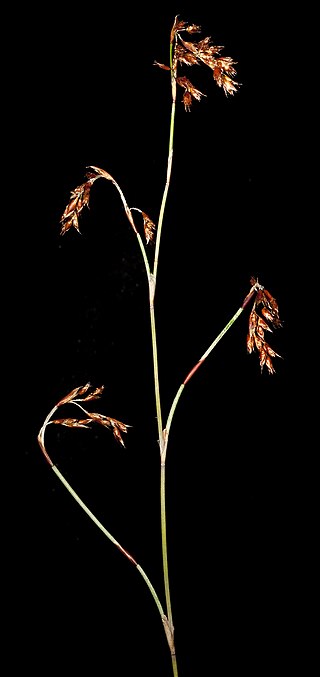
Meeboldina is a plant genus in the family Restionaceae, described as a genus in 1943. It is named for the botanical collector Alfred Meebold.
Hornschuchia is a genus of flowering plants in the custard apple and soursop family Annonaceae, with all species native to South America and in eastern Brazil. It is within the Bocageeae tribe.
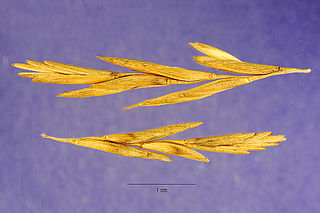
Thinopyrum is a genus of Eurasian and African plants in the grass family.
Plants of the World Online (POWO) is an online database published by the Royal Botanic Gardens, Kew. It was launched in March 2017 with the ultimate aim being "to enable users to access information on all the world's known seed-bearing plants by 2020". The initial focus was on tropical African Floras, particularly Flora Zambesiaca, Flora of West Tropical Africa and Flora of Tropical East Africa.
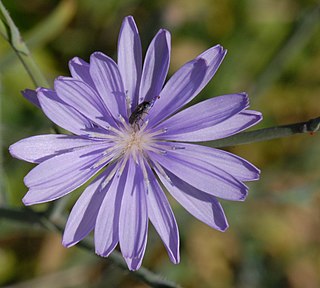
Lactuca tenerrima is a species of wild lettuce native to southern France, Spain, the Balearic Islands, and the Atlas Mountains of Morocco. Unlike other species in its genus Lactuca, even in its family Asteraceae, it does not produce bitter-tasting sesquiterpene lactones.
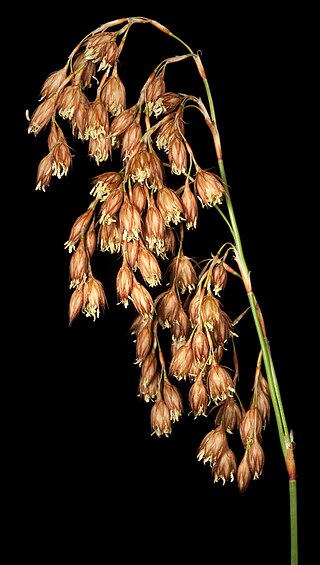
Chordifex microdon is a rush species of the genus Chordifex in the family Restionaceae, native to Western Australia.
















